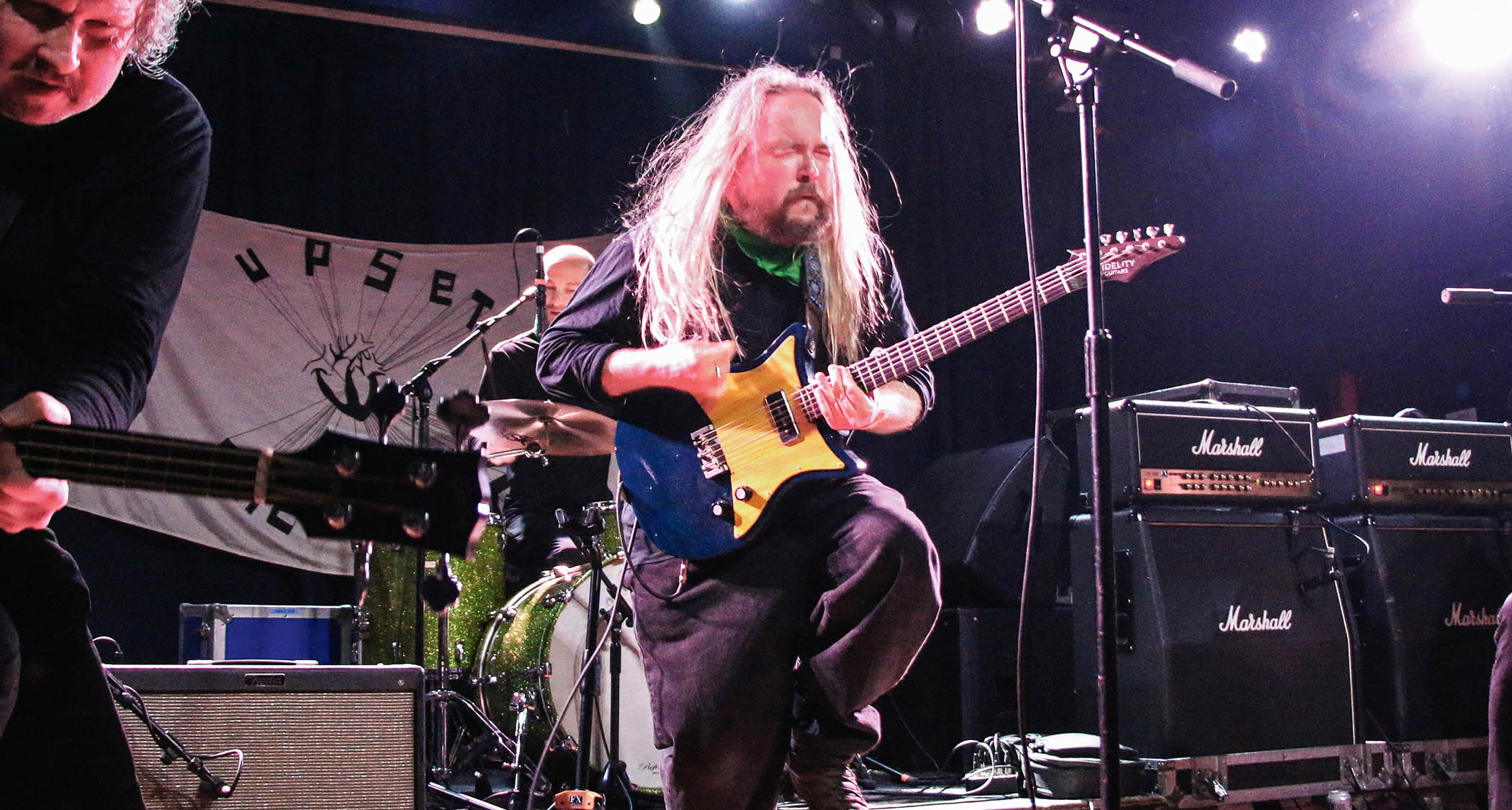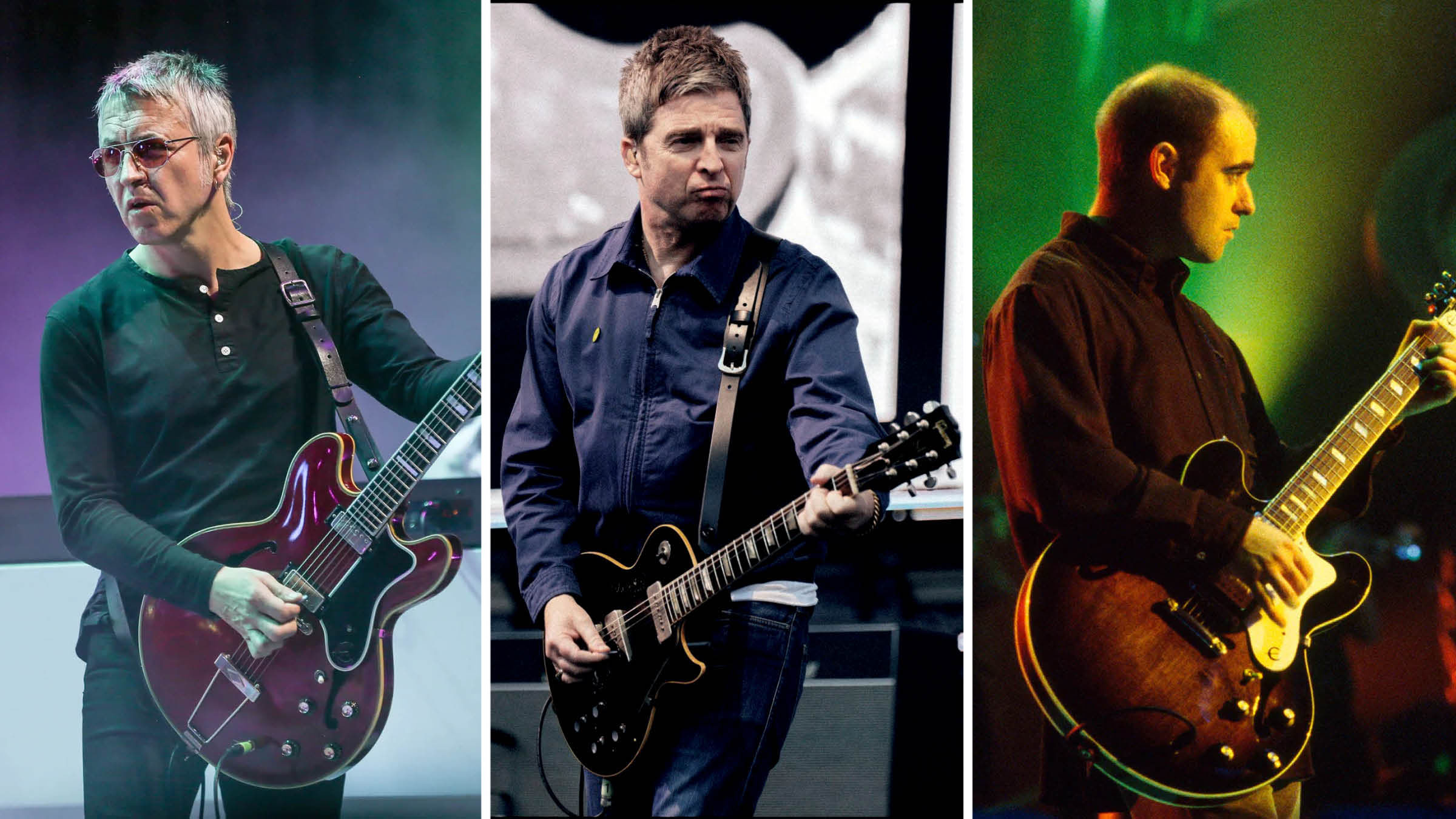“The audience got on my side when I came out with this broken guitar… it started life as a Baby Taylor but got stepped on and snapped”: He's been called the UK's “best, most humane songwriter” but a broken acoustic is the secret to Richard Dawson's sound
Richard Dawson on balancing the mundane and profane, and the "unsteady" melodies of his staggering new album

Newcastle-born Richard Dawson, who has been described as “Britain’s best, most humane songwriter” by The Guardian, released his eighth album, End Of The Middle, this year, and the storytelling here homes in on the family unit: “I wanted this record to be small-scale and very domestic,” he says of the concept.
Songwriting itself was something he worked on from a young age: “I wasn’t good at it, but it was a natural thing to want to do and I perhaps took the creative impulse for granted because I always had it.
“When I was 11, my sister had Iron Maiden’s first album and I fell in love with it. Then I got my first guitar and I never looked back, though it was just a [tool] to make songs at first. When I think back, it was terrible, terrible stuff.”
Sofa Sessions
Richard’s spiky guitar lines frame lyrics that can be simultaneously mundane and profound.
“I just sit on the sofa over there,” he says of his process. “I write everything with the same guitar, which started life as a Baby Taylor but got stepped on and snapped, so not much is original now. For the last five or six albums I’ve gotten all of the music ready and I’ll sit and write the lyrics in one time period.
“It’s good because you can be more in control of the links between the songs. Sometimes it seems the words are quite jammed in, but it makes nice variations in the melody, which can get blasted out of shape but is still there.”
Walks Of Life
Richard’s music has explored various territories – take 2021’s metal-infused Henki with Finnish experimental rock band Circle, and his previous record, The Ruby Cord, which opens with 41-minute track The Hermit.
All the latest guitar news, interviews, lessons, reviews, deals and more, direct to your inbox!
This year’s End Of The Middle is rather more restrained in comparison: “The first thing I decided was that it should be starker,” he says. “I wanted to make the most ‘pop’ songs in a way – the most direct, melodic songs that live and die on their own strengths. The other thing is that in every song, the characters are experiencing some kind of rebirth, like hopefully we get in our own lives.
“I wanted a feeling of a newborn foal staggering around a barn – very naked and softly played. That softness was a challenge for Andrew Cheetham, who played drums, but it gave the music this nice unsteady feeling, like it was unsure on its legs.”
Singular Style
While Richard explained that his journey with the guitar began with it being a songwriting tool, over the years his playing and personal style has become more distinctive.
“I have started to feel like I’m pretty good now and I can play like ‘me’,” he says. “I can’t play other people’s songs and I don’t think in terms of style; I’d find that a distraction. I don’t know the notes I’m playing, either, really, so it can be a struggle if I’m working with others.
“But if I have the time, I can figure things out quite quickly. So on one hand I’m quite a good guitar player and on the other I’m quite a bad one…” he laughs. “It’s the same, though; it doesn’t matter.”
Feel The Burns
Years back, Richard used to use his repaired Baby Taylor as both his live and songwriting guitar, but more recently he’s more often seen with a cool-looking Burns electric guitar strapped to him.
“I wasn’t looking for an electric, but this Burns Nu Sonic was in a shop in Newcastle and it became my main guitar,” he explains.
“It’s a 1964 and it’s fantastic. It’s quite little and comfortable, with a microphonic pickup. I also have this Fidelity guitar that Matt [Oram] made for me [pictured left]. It’s really stable and sounds great – it’s my main guitar for when I play with Circle because it needs to be on point and in tune.”
My Baby (Taylor)
Richard’s hard-gigged Baby Taylor is dear to him in its underdog status and he appreciates its idiosyncrasies.
“I squashed it a few times and was gigging with it when it wasn’t projecting and the strings wouldn’t ring at all,” he smiles.
“The audience got on my side when I came out with this broken guitar, and I just like the idea that there’s not much of the original instrument left any more. It’s like a broom, where you replace the handle and a year later you replace the bristles…”
- End of the Middle is out now via Domino.
- This article first appeared in Guitarist. Subscribe and save.
Glenn Kimpton is a freelance writer based in the west of England. His interest in English folk music came through players like Chris Wood and Martin Carthy, who also steered him towards alternate guitar tunings. From there, the solo acoustic instrumental genre, sometimes called American Primitive, became more important, with guitarists like Jack Rose, Glenn Jones and Robbie Basho eventually giving way to more contemporary players like William Tyler and Nick Jonah Davis. Most recently, Glenn has focused on a more improvised and experimental side to solo acoustic playing, both through his writing and his own music, with players like Bill Orcutt and Tashi Dorji being particularly significant.
You must confirm your public display name before commenting
Please logout and then login again, you will then be prompted to enter your display name.




